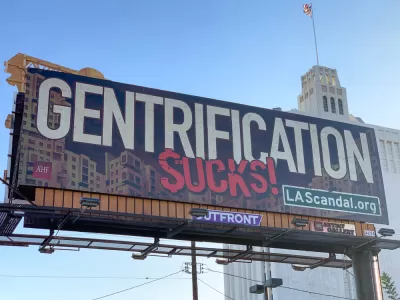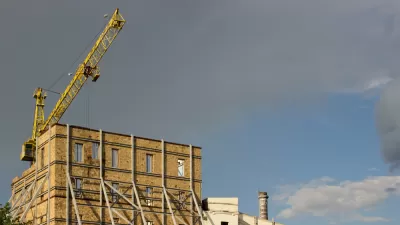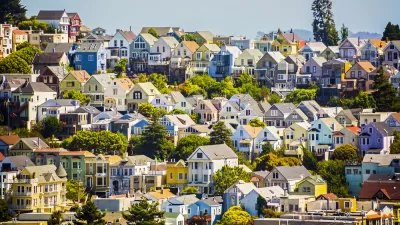There’s more than one way to be excluded from your community.

For decades, activists in Camden, New Jersey, have complained that investment in their city has focused on the downtown and waterfront neighborhoods that attract suburbanites, tourists, and newer residents, to the exclusion of longtime residents in the community. It’s a familiar complaint, the type you might hear from activists in Baltimore about the Inner Harbor. Residents see downtown investment and wonder—why must we depend on the theory of trickle-down economics belief that neighborhoods will be helped by investment downtown? Why can’t we invest in our neighborhoods directly?
Or in other words, as resident Luis Galindez—quoted in Howard Gillette’s book, After the Fall—put it when public funds went toward a new waterfront aquarium in Camden, “We got two and three families living in one house and fish in tanks by themselves . . . we could really have used that money.”
But in Camden, after residents argued for years that there needed to be investment in neighborhoods, a funny thing happened: A vocal group of residents opposed such investment when it came, on the grounds that it would gentrify those neighborhoods.
An example was a plan to demolish and rebuild Camden High School. The state’s Schools Development Authority—which funds and manages school construction in 31 marginalized cities across the state—committed $132.6 million to Camden High. Investment in the school—historically the flagship of the city’s education system and located in the center of Camden’s historically African-American neighborhood—seemed like a direct answer to criticism that investment only happened downtown. Except instead of being lauded by local community members, the announcement deeply divided the community.
In an op-ed, local activist, resident, teacher, and union leader Keith Benson argued that new development is a transparent gentrification tactic:
“The proposal of a new Camden High School is really part of a broader Parkside development strategy intended to benefit a targeted few and victimize lower-income residents. This behavior, sadly, is consistent from our local politicians, but an honest conveyance of this issue would go far in educating our Camden community about what we stand to lose if Camden High is torn down. We, as a community of people who care about our neighbors, must fight this, because our collective future here depends on it.”
The very thing that activists and residents had spent decades advocating for—investment in their neighborhoods—was now being criticized as gentrification. Why?
...
FULL STORY: Why Do Low-Income Residents Oppose Development Even When Displacement Risk Is Low?

Maui's Vacation Rental Debate Turns Ugly
Verbal attacks, misinformation campaigns and fistfights plague a high-stakes debate to convert thousands of vacation rentals into long-term housing.

Planetizen Federal Action Tracker
A weekly monitor of how Trump’s orders and actions are impacting planners and planning in America.

In Urban Planning, AI Prompting Could be the New Design Thinking
Creativity has long been key to great urban design. What if we see AI as our new creative partner?

Cal Fire Chatbot Fails to Answer Basic Questions
An AI chatbot designed to provide information about wildfires can’t answer questions about evacuation orders, among other problems.

What Happens if Trump Kills Section 8?
The Trump admin aims to slash federal rental aid by nearly half and shift distribution to states. Experts warn this could spike homelessness and destabilize communities nationwide.

Sean Duffy Targets Rainbow Crosswalks in Road Safety Efforts
Despite evidence that colorful crosswalks actually improve intersection safety — and the lack of almost any crosswalks at all on the nation’s most dangerous arterial roads — U.S. Transportation Secretary Duffy is calling on states to remove them.
Urban Design for Planners 1: Software Tools
This six-course series explores essential urban design concepts using open source software and equips planners with the tools they need to participate fully in the urban design process.
Planning for Universal Design
Learn the tools for implementing Universal Design in planning regulations.
Appalachian Highlands Housing Partners
Gallatin County Department of Planning & Community Development
Heyer Gruel & Associates PA
Mpact (founded as Rail~Volution)
City of Camden Redevelopment Agency
City of Astoria
City of Portland
City of Laramie





























